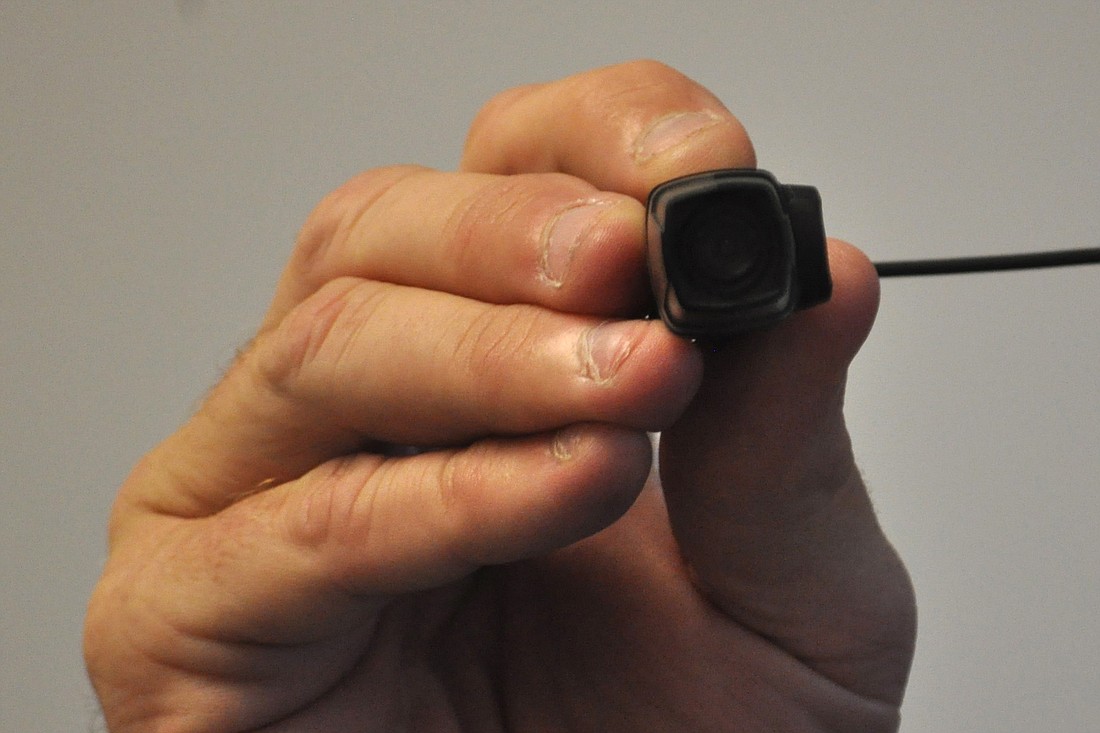- February 28, 2025

Flagler County deputies have a new tool in their arsenal. But this one, smaller than a pack of playing cards, doesn’t shoot, zap or strike: It’s a video camera, so tiny it can by pinned to a deputy’s shirt or mounted to a pair of sunglasses.
“Body-worn cameras have been one of the biggest things on the sheriff’s radar since he took office,” Traffic Patrol Sgt. Michael Van Buren said. The evidence the cameras collect can be the difference between a conviction and an acquittal, he added: “I’ve had juries come back in DUI cases saying they would have convicted if there had been video.”
For at least a decade, Van Buren said, the Flagler County Sheriff’s Office hasn’t had video cameras, even in patrol cars. But now it has 20 of the miniature cameras, manufactured by the Taser corporation, and would like to purchase 60 more so all road patrol and traffic deputies have one. Each unit costs about $500.
Van Buren wears his on a headset over his ear when he’s in a patrol car, or pinned to his shirt when he’s out on motorcycle patrol.
The camera stays in a kind of sleep mode until a deputy activates it by pressing a button, Van Buren said, but once that happens, it begins recording — starting not with the button press but at a point 30 seconds before it.
The video captured a traffic stop Van Buren performed recently, and that lead time came in handy. In the video, a car zooms up behind Van Buren on the highway, visible in his rear-view mirror. It speeds to his right, onto the tail end of an entrance ramp — there’s a beep on the video as Van Buren activates the camera — and then shoots past him at 85 mph. The 30-seconds of back time captured the car as it sped up behind Van Buren, before he pressed the button to engage the camera.
The small, mobile units have advantages over traditional dash-mounted cameras, Van Buren said.
“The majority of our deputies’ work is outside of the car, so having a camera in the car doesn’t always capture what the deputy has to face,” he said.
The cameras also have an iPhone and Android app that lets deputies watch their videos immediately on a smartphone, tag them with case numbers and view how much video recording time they have left. The cameras also make it easier for deputies to fill out reports, Van Buren said. “When I’m at a crash, I can activate it when I’m interviewing the different parties."
The cameras can be used for about a week before the videos have to be cleared out and uploaded to cloud storage at evidence.com, Van Buren said, and a battery pack, worn on deputies’ belts, gives the video units enough power for a full day of patrol.
Only seven of the Sheriff’s Office’s 20 cameras are now in use, because the Sheriff’s Office needs to increase its network capabilities to be able to handle the uploads from more cameras. They’re working on that now, Van Buren said, and would like to outfit each deputy with a camera during the upcoming year.
“I know of times where video has saved careers, because of bogus complaints,” he said. “The video doesn’t lie.”